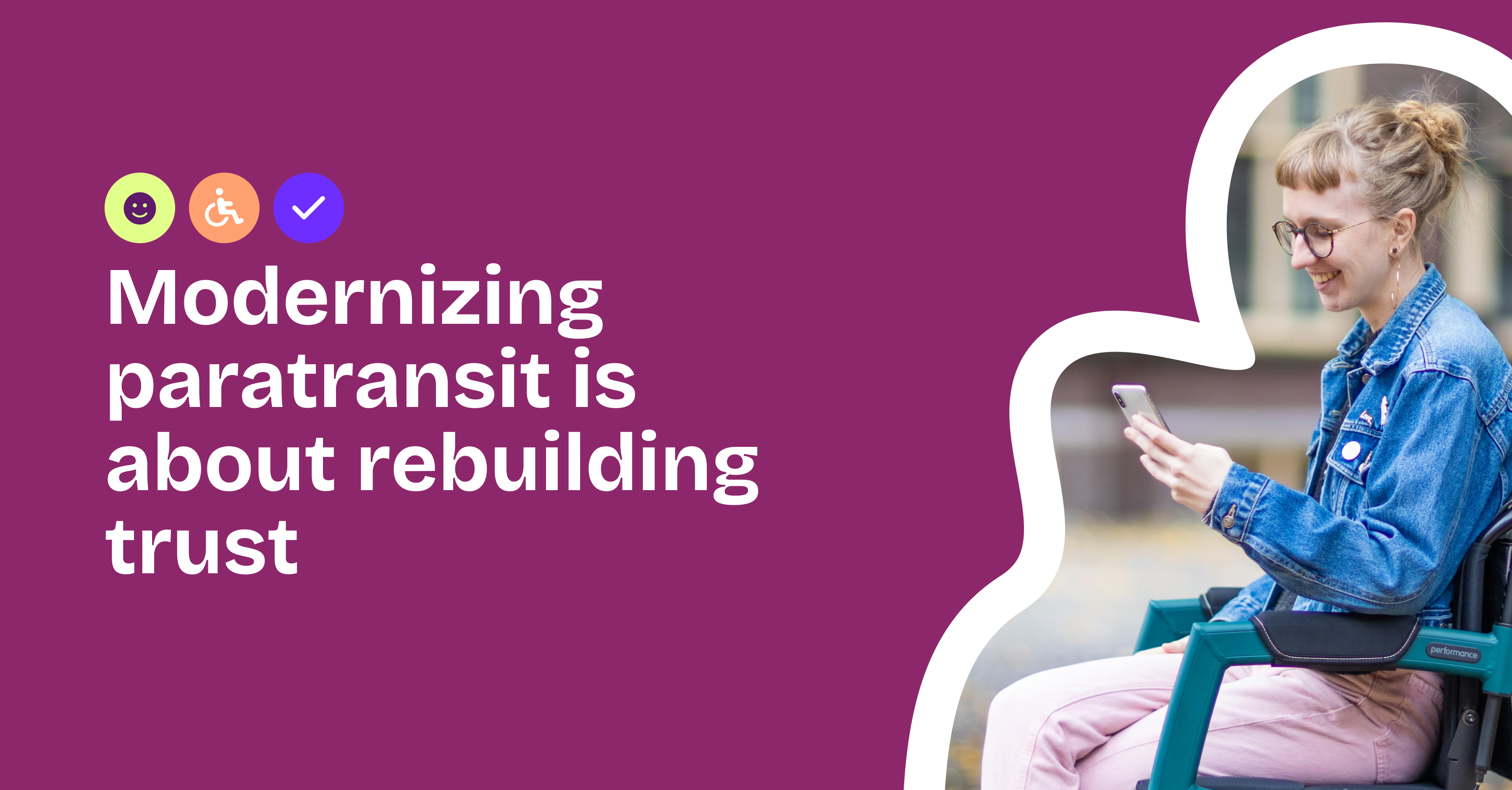How to encourage your paratransit riders to make bookings in app or online

In 2020 during the height of the pandemic, the Cheyenne Transit Program (CTP) in Cheyenne, Wyoming canceled its fixed-route bus services, replacing them with Spare-powered commingled on-demand microtransit and paratransit service to lower costs and boost efficiency. The quick adoption of the new service meant that CTP’s booking agents and dispatchers were overwhelmed by rider calls. Although riders could plan, book and pay for trips on their own with a smartphone app, uptake was slow. Since it was a new and different way of booking trips, paratransit riders needed help learning how it worked. Call by call CTP booking agents informed riders that they could book and track their trips independently. This not only meant more convenience for the riders, it meant fewer calls to booking agents and more savings for CTP.
The CTP isn’t the only paratransit provider that is breathing new life into its services by implementing tech-enabled solutions. Many others are automating operations by offering their riders self-serve, digital booking options or introducing same-day/on-demand trips.
While innovation is key to improving the paratransit experience, what is of equal importance is taking the time to effectively communicate those changes and educate paratransit riders on how to use the digital service. In this post, we offer tips for creating an outreach strategy that ensures both new and existing riders understand technology-driven service updates.
Provide a variety of educational resources
When a service update comes with a learning curve for riders, it’s important to provide them with detailed—but still digestible—information.
One of the main reasons paratransit providers adopt new software is to empower riders to live more independent, spontaneous and empowered lives which is made possible with more flexible booking options. On-demand or same-day trip options provide riders with more freedom to move around. Paratransit riders also get the flexibility to make spur-of-the-moment trips that full-time users of fixed-route buses enjoy.
Providing adequate and timely information to riders is a core part of transitioning to new technology. A well-planned, and executed outreach campaign can help riders adopt the digital self-serve options from the get-go. Outreach material might include guides, flyers or other print material that explain the process, in-app tutorials that provide riders with prompts they can follow to complete a trip booking or demo videos that provide a detailed step-by-step overview of how to use the app or website to book a ride.
Check out the Spare Rider demo video for an example.
Communicate the benefits of innovation
Education about new platform adoptions should go beyond logistics and also explain the benefits to riders. For instance, web and app-based booking options are typically available 24/7, as opposed to call-in centers which have limited hours and potentially long wait times. They’ll also likely enjoy the increased convenience of being able to independently view, update, or cancel trips.
Some services also offer increased flexibility to riders who book online. For instance, paratransit riders who use a live agent to book a trip with Dallas Area Rapid Transit (DART) can make a reservation up to two days in advance Monday-Wednesday, and up to four days in advance on Thursday and Friday. If riders book a trip independently through DART’s self-serve phone line or website, however, they can book rides up to four days in advance any day of the week.
Operators can also consider providing incentives for riders to switch to lower-cost booking channels, such as free trips or reduced fares to boost self-serve tool uptake.
Cover all your outreach bases
An outreach strategy for communicating new service updates should be based on an understanding of who your potential riders are and how/where you can best reach them.
The Southeast Area Transit District (SEAT), for instance, does presentations throughout the region to agencies who represent clients that may qualify for paratransit. Those agency representatives can then train the clients they think may be a good fit for self-serve booking on how to use those options.
Disseminating resources like guides and pamphlets via both mail and email are also good ways to spread the word. To make this as effective as possible, segment your riders into groups based on which people will likely need a more hands-on approach to adopting new booking methods, and tailor your outreach strategy according to those individual groups.
Of course, a great way to ensure you get your message across is to intersect communication with riders’ current use of the service. For instance, provide new riders with details on how to use the updated service when their eligibility is confirmed or have dispatchers ready to provide established rides with information when they call in to make a booking.
With the above tips in mind, providers can also ensure that their paratransit riders are fully on board for innovations that will improve their experience.

Having applications in Spare not only significantly streamlines our application processing, but it also allows us to more efficiently and effectively serve GATRA riders. GATRA can process applications in real time so riders can start using the service right away.
.png)





